Key takeaways:
- Identifying anger triggers, such as feeling dismissed or overlooked, helps uncover deeper emotional issues and patterns linked to past experiences.
- Transforming negative thought patterns through mindfulness and reframing enables better emotional regulation and turns anger into motivation for growth.
- Developing healthy coping strategies, celebrating small wins, and monitoring progress fosters a more constructive relationship with anger, leading to empowerment and resilience.
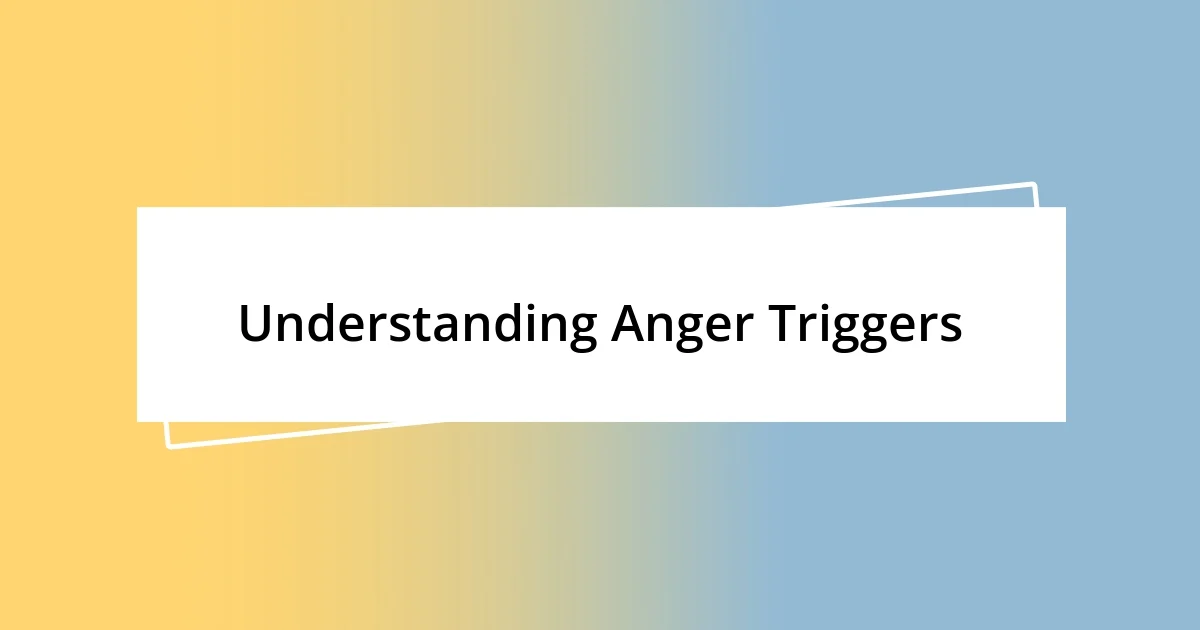
Understanding Anger Triggers
We all have our buttons, don’t we? For me, one of the biggest triggers was always feeling dismissed in conversations. It got me thinking: why do certain situations cause such intense reactions? Identifying those moments, like when someone cut me off in traffic or belittled my ideas at work, helped me understand my anger wasn’t just about the incident itself, but rather deeper feelings of disrespect and frustration that I hadn’t addressed.
Think about those times when you felt your blood boiling—it’s often rooted in something personal. For example, I remember a day when a colleague took credit for my hard work. That moment wasn’t just about him; it stirred up years of experiences where I felt overlooked. Reflecting on situations like that helps uncover the underlying fears or insecurities we face, and it’s eye-opening to realize where the anger truly originates.
Sometimes, recognizing a trigger begins with a simple question: “Why does this upset me?” I found journaling to be a powerful tool. When I wrote about specific instances that angered me, I could see patterns emerging. It was almost like putting together a puzzle, revealing how these triggers connected to my past—so illuminating and, honestly, a bit freeing!

Recognizing Negative Thought Patterns
Recognizing negative thought patterns is crucial in transforming anger into action. I often found myself stuck in a loop of negativity, especially after hostile encounters. For instance, when I faced criticism at work, my mind would spiral: “I’m not good enough,” or “I’ll never succeed.” Realizing these automatic thoughts was the first step in breaking the cycle. Instead of letting them fester, I began questioning these thoughts: Are they based on facts or merely assumptions? This shift in perspective helped me regain control over my emotional responses.
There was a time when I would ruminate on negative interactions for days, replaying conversations in my head. It felt as if I was living in an endless loop of frustration. I now recognize this as a classic negative thought pattern called rumination. To counteract this, I introduced mindfulness exercises that encouraged focusing on the present moment. As I practiced redirecting my thoughts, I noticed a significant decrease in my anger levels, as I was no longer giving power to past grievances.
Negative thought patterns can manifest in various ways, such as catastrophizing or overgeneralizing. I experienced this firsthand when I wrongly assumed that one failure in a project meant I was a perpetual failure. By dissecting these thoughts, I realized their irrationality. Instead of seeing setbacks as definitions of my worth, I began interpreting them as opportunities for growth. This new mindset significantly changed my approach to challenges, transforming moments of anger into motivation for improvement.
| Negative Thought Patterns | Reframed Thoughts |
|---|---|
| I’m always overlooked. | My contributions have value. |
| I can’t handle criticism. | Feedback is a chance to improve. |
| I’ll never succeed. | Everyone experiences setbacks. |
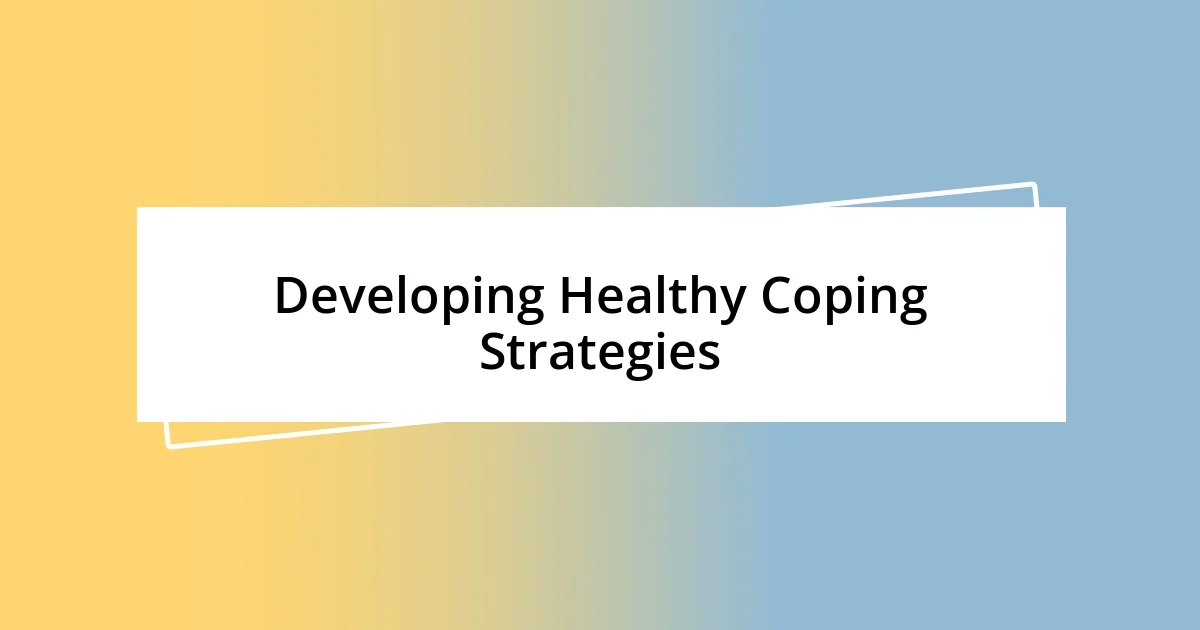
Developing Healthy Coping Strategies
Developing healthy coping strategies is essential for managing anger effectively. I eventually learned that proactive approaches, rather than reactive ones, were key to my transformation. For instance, when I felt the familiar anger bubbling up, instead of sulking or lashing out, I would take a moment to breathe deeply and count to ten. This practice helped me step back and regain a sense of calm, enabling me to respond rather than react.
Here are some coping strategies that I found particularly helpful:
– Breathe deeply: Focusing on my breath can quickly shift my mood.
– Engage in physical activity: A brisk walk or a workout is a great way to channel anger into something positive.
– Practice mindfulness: Mindfulness meditation allows me to ground myself and observe my feelings without judgment.
– Talk it out: Sharing my feelings with a friend provides perspective and often eases my tension.
Adapting these strategies requires consistent effort, but I’ve seen the difference they make. After a frustrating experience at work one day, instead of bottled-up feelings, I chose to grab my running shoes and hit the pavement. The physical exertion coursed through me, helping to clear my head and shift my focus. I came home feeling revitalized, mentally prepared to tackle whatever lay ahead. Embracing these healthy habits has gradually transformed my relationship with anger from one of chaos to one of empowerment.
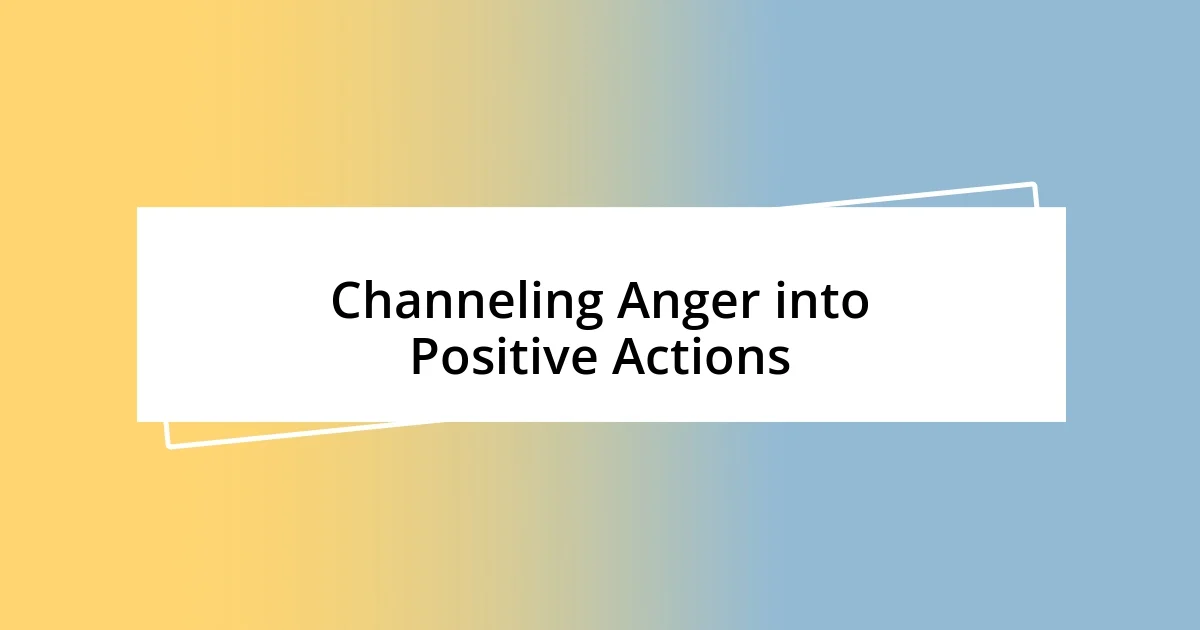
Channeling Anger into Positive Actions
Channeling anger into positive actions can feel daunting at first; I completely understand that struggle. There was a moment when I felt overwhelmed after a heated argument with a friend. Instead of letting that anger consume me, I decided to volunteer at a local community center. Transforming that energy into helping others not only lifted my spirits but also created a meaningful connection I hadn’t anticipated. Have you ever turned frustration into fuel for something greater?
I’ve found that writing can also be a powerful way to channel anger. One evening after a particularly tough day at work, I sat down and scribbled my thoughts in a journal. As my pen raced across the page, I began to unravel those intense feelings. It was almost cathartic. I realized that expressing my anger creatively allowed me to gain clarity and perspective while also empowering me to take action toward solutions rather than lingering in resentment. Have you ever tried writing to process your emotions?
Another effective way I’ve redirected my anger is through physical activity. When I feel that familiar tension building, especially after a frustrating encounter with a family member, I’ve learned to take a brisk walk or even hit the gym. Those moments of exercise become my outlet, transforming my negative energy into something that feels invigorating and constructive. The endorphins I experience afterward create a stark contrast to the anger I initially felt, showcasing how action can lead to a positive emotional shift. Have you experienced a similar transformation through physical activity?
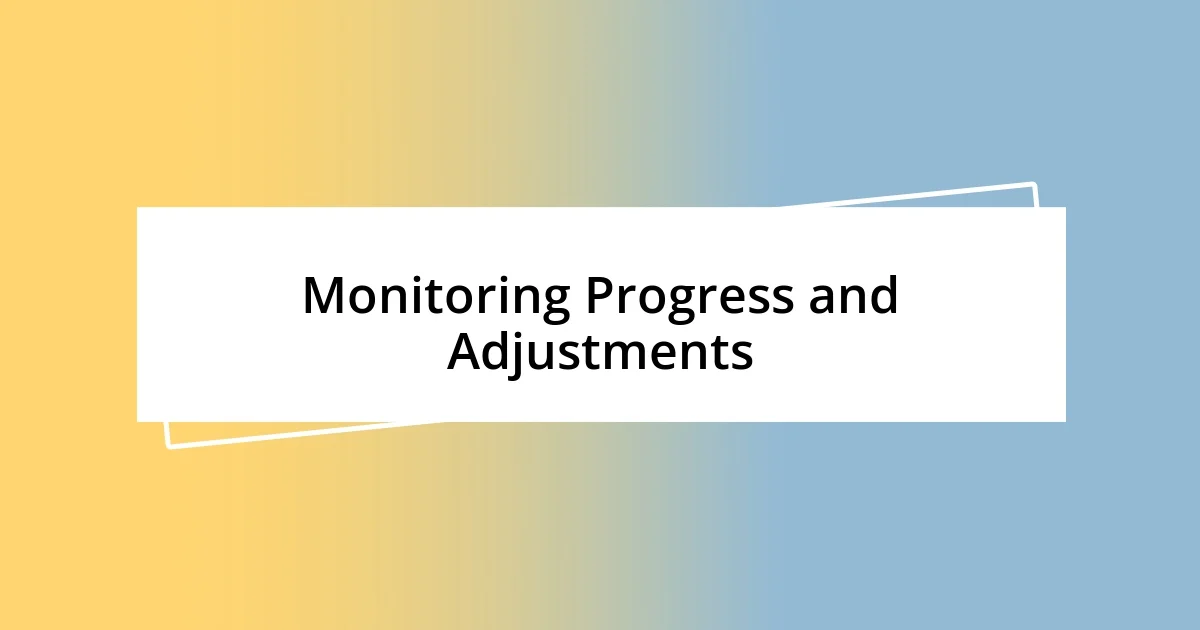
Monitoring Progress and Adjustments
Tracking my progress is a vital part of how I’ve transformed my anger into actionable steps. I remember setting specific goals, like practicing mindfulness for ten minutes each day. Initially, I diligently noted my feelings and how the strategies affected my mood, and surprisingly, it felt rewarding to see the gradual shift. Have you ever felt that sense of achievement just by noting your small wins?
Adjustments are equally crucial in this journey. I quickly learned that not every strategy worked every time. If I attempted to talk it out with a friend but ended up feeling more frustrated, I would pivot to writing or exercise instead. There was a moment when I tried to meditate, but my mind kept racing. Instead of getting discouraged, I switched to another approach—going for a nature walk instead. I found that each experience taught me something new about myself.
Emotional check-ins became my compass, guiding me through moments of turbulence. I began asking myself reflective questions, such as, “What triggered this anger today?” or “How can I redirect this energy positively?” This practice helped me stay connected with my feelings. It was enlightening to delve deeper, realizing that my anger often pointed to unmet needs or unresolved issues. Have you taken the time to explore what your emotions are trying to tell you?
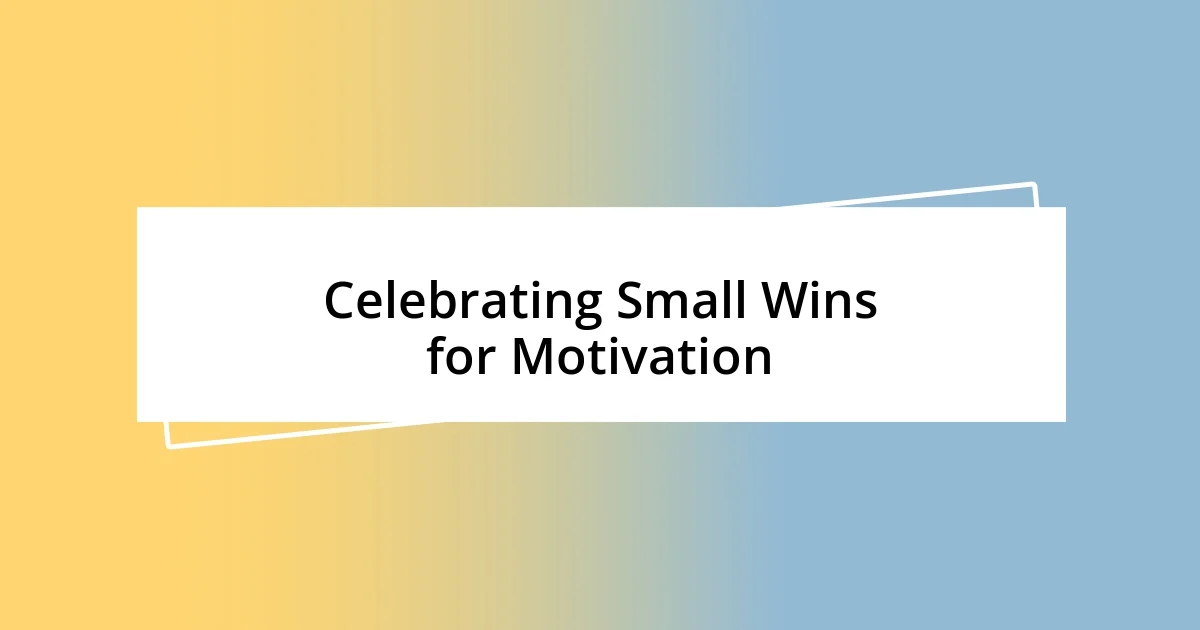
Celebrating Small Wins for Motivation
I’ve discovered that celebrating small wins is a game changer for motivation. For instance, after implementing my new anger management techniques, I found joy in simple milestones, like completing a week of daily meditation. Each time I marked that on my calendar, it felt like a mini-celebration of progress. Have you ever paused to recognize the little steps you’ve taken?
One time, I caught myself getting agitated over a minor setback at work. Instead of spiraling, I took a moment to reflect and realized I had successfully navigated similar challenges before. Recognizing that, I treated myself to a coffee break as a reward. Celebrating that moment not only lifted my spirits but also propelled me forward with renewed energy. Isn’t it amazing how acknowledging these small victories can change your perspective?
I also find that sharing my small wins with friends or family amplifies the positivity. There was an occasion where I shared my progress in handling stress with a close friend who cheered me on and even shared her own small victories. This exchange not only strengthened our bond but also reminded me that we’re all on a journey of growth together. Isn’t it reassuring to have a support system that acknowledges your efforts?














